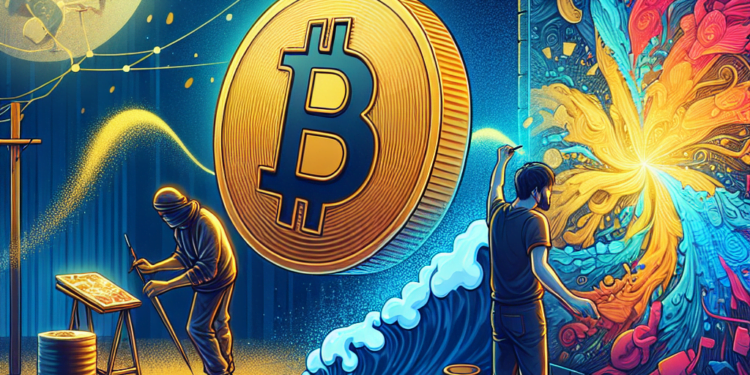The world of art has always been a fascinating space filled with creativity, aesthetic innovation, and a keen reflection of the zeitgeist. Lately, a novel trend has surged forward, painting the art world with hues of the digital age. Namely, NFTs have thundered onto the scene, causing established norms in the art world to stutter and rethink. Originating from street artists like Banksy to digital rescinders like Beeple, NFTs are certainly blazes trails.
What Are NFTs?
NFTs, or Non-Fungible Tokens, are unique digital assets that use blockchain technology to establish authenticity and ownership. Unlike cryptocurrencies like Bitcoin, NFTs are unique: they cannot be exchanged at equivalency. This uniqueness and the ability for creators to earn royalties each time the NFT is sold make NFTs particularly appealing for artists.
The Advent of NFT Art
One of the most illustrious names that spring to mind when discussing NFT art is Banksy, a pseudonymous England-based street artist whose real identity remains unconfirmed. In March 2021, a company called Injective Protocol bought one of his artworks, only to burn it and digitise the work as an NFT. The news raised many eyebrows and highlighted the disruptive effect NFTs could have on traditional art norms.
But there’s more. March 2021 was a watershed moment in the history of NFT art, and not just because of Banksy. An artist named Beeple, otherwise known as Mike Winkelmann, sold an NFT artwork at Christie’s for a shocking $69 million! The piece, “Everydays: The First 5000 Days,” became the third highest-selling work by a living artist at auction.
NFTs and the Democratization of Art
So, what is driving this digital gold rush? NFTs are heralded as democratizing the art world. No longer do artists need galleries to sell their work; with NFTs and the internet, anyone can buy or sell art. Further, artists can retain more profits and have a clearer understanding of their work’s provenance.
NFTs also offer exciting prospects for customers. Buying an NFT means buying a unique, original piece. Customers can prove their ownership via the blockchain, and they can resell the artworks at their discretion.
The Flip Side of the Coin
Amid all the optimism, NFTs have also had their share of criticism. Critics argue that the NFT boom is jeopardizing the environment due to the extensive energy consumption associated with cryptocurrency and blockchain technology. Others stress that NFTs are yet another investment bubble ready to burst.
Yet, like any revolutionary idea, it is staying afloat amidst criticism, and only time will tell whether NFTs transform the entire art industry or become just another passing trend.
Conclusion
NFTs have undeniably shaken the art world. From street artists like Banksy creating buzz by moving traditional physical art into the digital realm, to digital artists like Beeple gaining success unprecedented in the digital art sphere, we are witnessing firsthand the disruptions caused by the intersection of creativity, technology, and the internet. Are we ready for this change? Only time will tell. In the meantime, keep an eye out on DeFi Daily News for more trending news articles like this.
Frequently Asked Questions(FAQs)
1. What is an NFT?
A Non-Fungible Token (NFT) is a type of digital asset that represents a wide range of tangible and intangible items, from collectible sports cards to virtual real estate and even digital sneakers.
2. Who are Banksy and Beeple?
Banksy is a pseudonymous England-based street artist whose works of political and social commentary have appeared on walls, bridges, and streets of cities throughout the world. Beeple is a graphic designer from Charleston, South Carolina, known for his popular digital art releases.
3. Why are NFTs seen as revolutionary in the art world?
NFTs are lauded as game changers because they allow artists to sell works directly to a global audience without needing to go through galleries or auction houses. The artists can also program in royalties so they’ll receive a percentage of sales whenever their art is sold to a new owner.



















